
Nara, Japan Photo Travelogue cover page. |

Map of Japan with the star indicating Nara. |
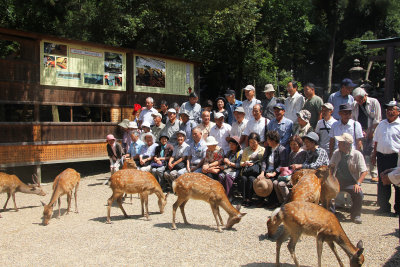
Deer and tourists in Nara Park. Deer are considered to be a sacred symbol in Nara. |
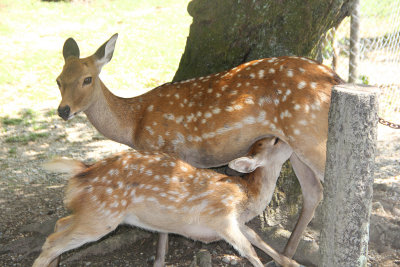
A mother deer with a nursing baby at Nara Park. |
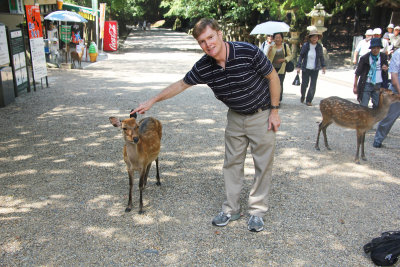
As you can see, the deer are friendly and used to people. |
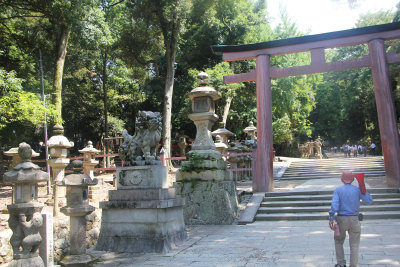
Lanterns and steps at Nara Park. |
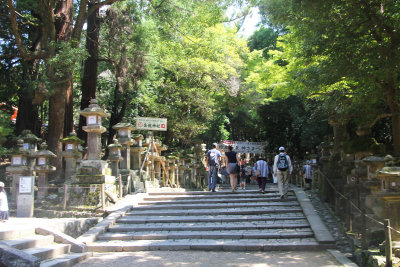
Tourists heading up the steps. |
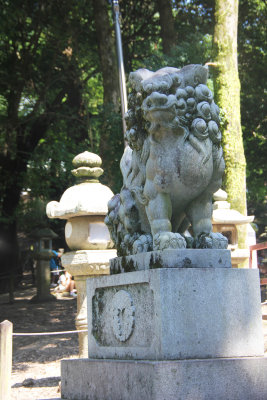
An impressive lion statue in Nara Park. |
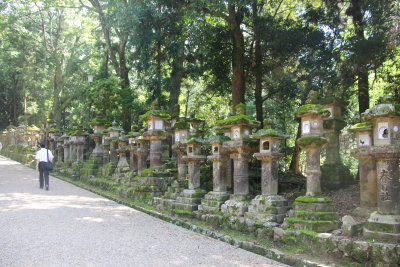
Along the pathway are many stone Japanese lanterns. |
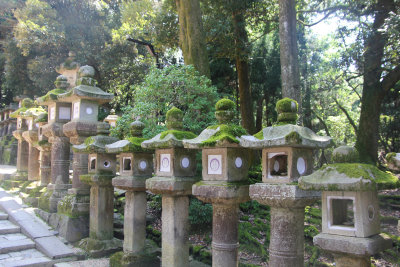
Closer view of the lanterns. |
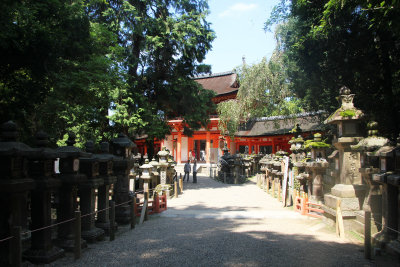
View of the Kasuga Grand Shrine in Nara, which was established in established in 768 AD. |
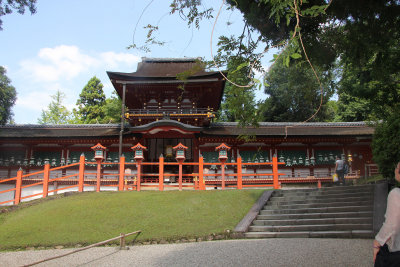
It is the shrine built for the Fujiwara family. The interior is famous for its many bronze and stone lanterns. |
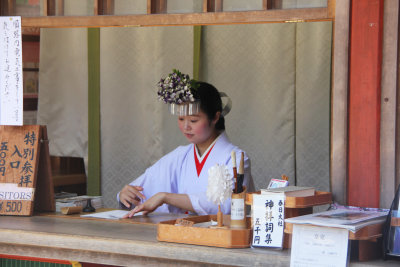
Beautiful Japanese girl working at the entrance to the shrine. |
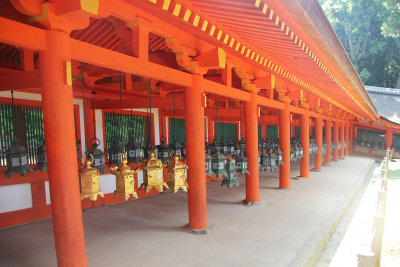
Interior with many bronze lanterns. |
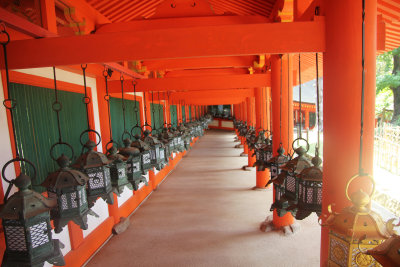
Dozens of lanterns adorn the passageway. |
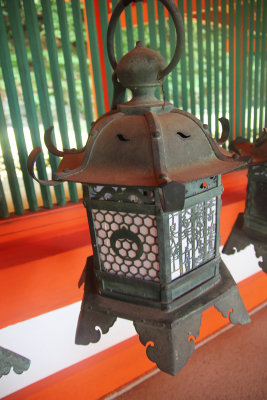
Close-up of one of a bronze lantern. All of the lanterns have different designs. |
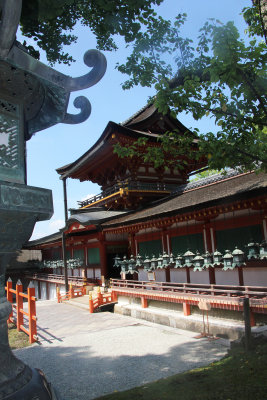
View of the middle gate and hall of the Kasuga Grand Shrine. |
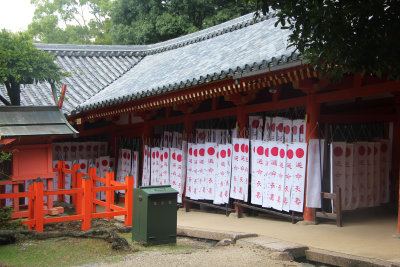
Some decorative banners were hanging at the shrine. |
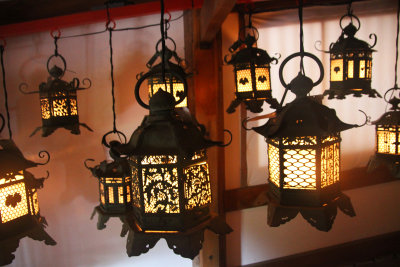
Illuminated bronze lanterns hanging at the Kasuga Grand Shrine. |
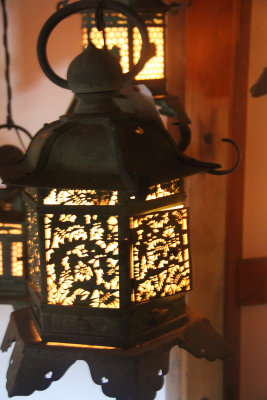
The design is accentuated when the lantern is lit. |
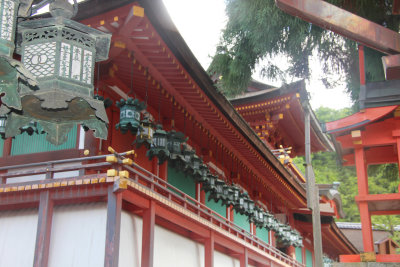
Corner view of the Kasuga Grand Shrine. |
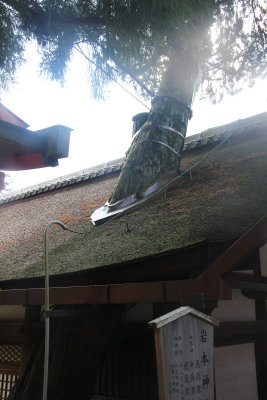
Next, we moved on to the nearby Tamukeyama Hachimangu Shrine where a tree was growing through the roof. |
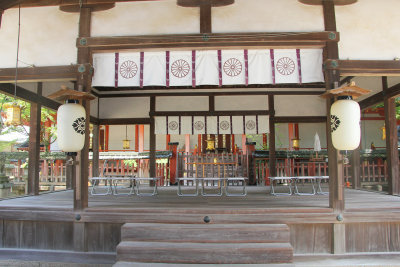
The Tamukeyama Shrine is the first branch of the Hachimangu Shrine, which was established in 749 AD. |
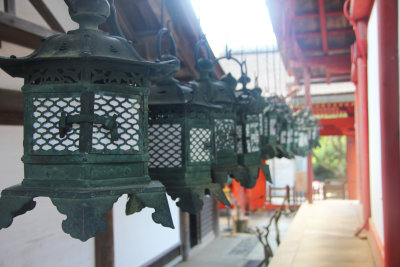
The Tamukeyama Shrine was destroyed in 1180 and rebuilt in 1250. Bronze lanterns at the shrine. |
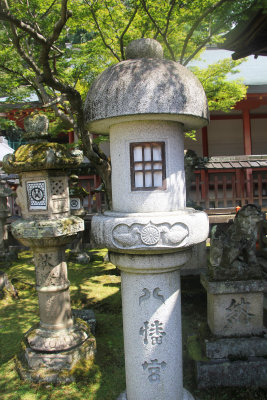
Stone lantern at Sangatsudo Shrine. |
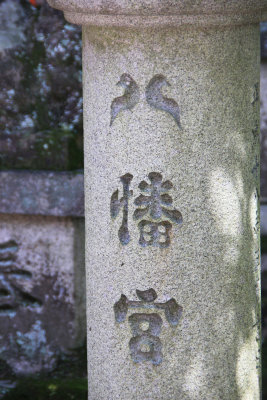
Close-up of the base of the lantern. |
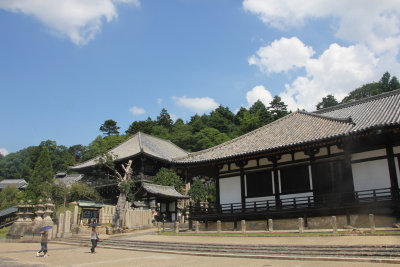
Our next stop was the nearby Sangatsudo Shrine, which was also established in the 8th century AD. |
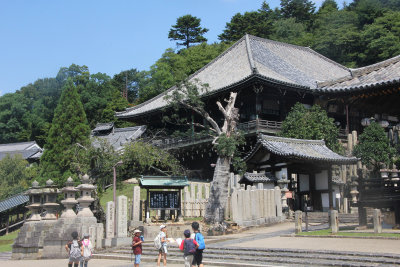
Japanese school children were visiting the shrine. |
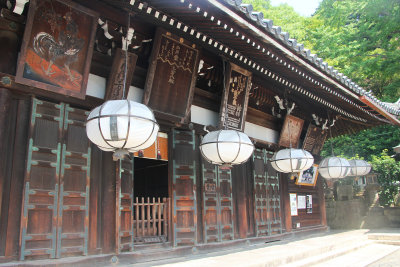
Large paper lanterns hanging at the Sangatsudo Shrine |
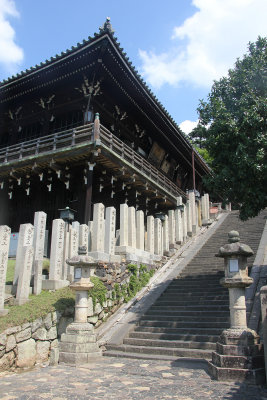
Our next stop was at Nigatsudo Hall (which means "The Hall of the Second Month"). |
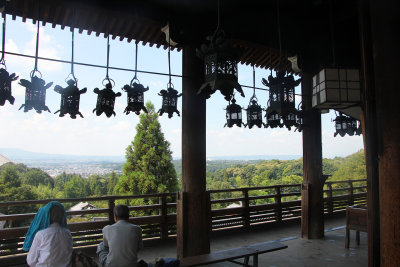
The beautiful main hall was rebuilt in 1669 after burning during a Shini-e ceremony. |
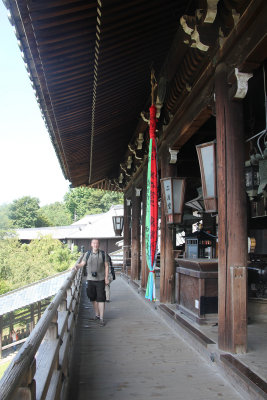
From the balcony of at Nigatsudo Hall, is a spectacular view of Nara. |
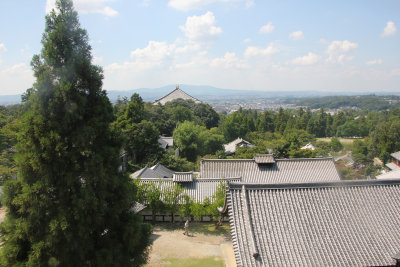
View of Nara from the balcony. |
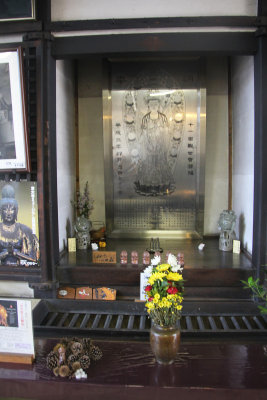
A shrine inside of Nigatsudo Hall. |

Getting to the Nigatsudo Hall requires climbing about 70 steps. |
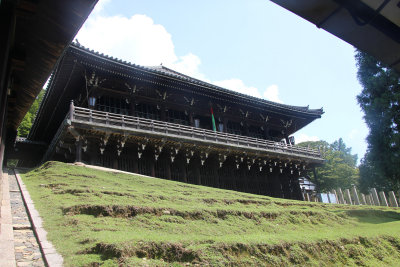
View of Nigatsudo Hall from the steps, below. |
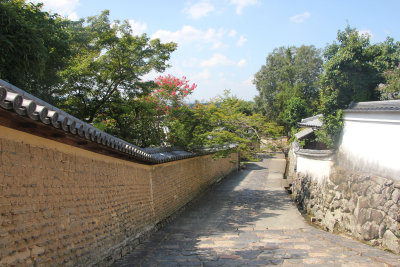
After leaving Nigatsudo Hall, we walked along this narrow cobblestone path. |
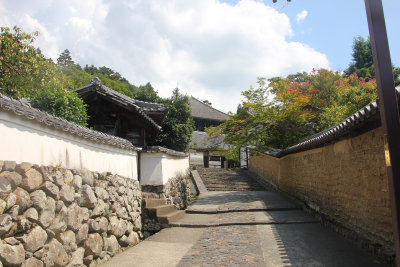
We walked away from Nigatsudo Hall towards the Todaiji Temple. |
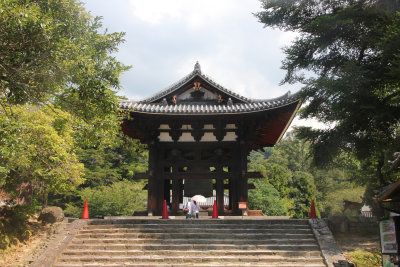
View of the Todaiji shoro or "Nara Taro" (belfry), where a bell hangs in the Shoro in the Nara Park. |

Close-up of the bell. |
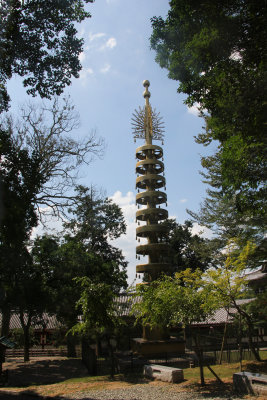
A bronze spire on a rooftop of a building as we approached the Todaiji Temple. |
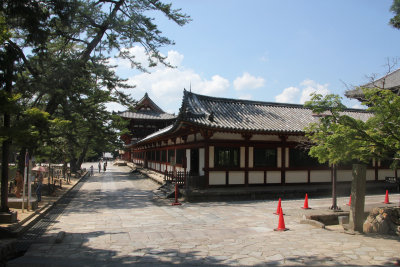
Buildings near the Todaiji Temple. |
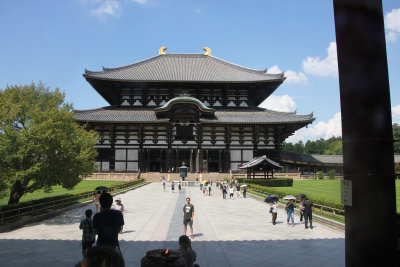
Front fašade of the Todaiji Temple (the Eastern Great Temple). It is a Buddhist temple complex and a UNESCO World Heritage Site. |
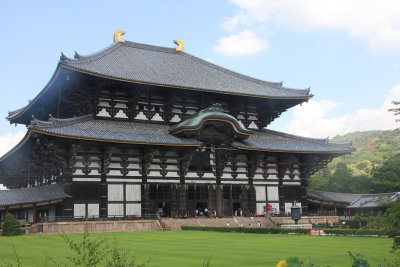
The temple was constructed in 752 as the head temple of all provincial Buddhist temples of Japan. |
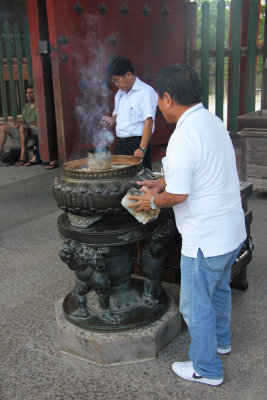
Incense burner and Buddhist worshippers outside of the Todaiji Temple. |
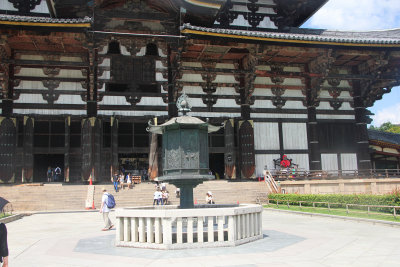
Todaiji's main hall, the Daibutsuden (Big Buddha Hall) is the world's largest wooden building. |
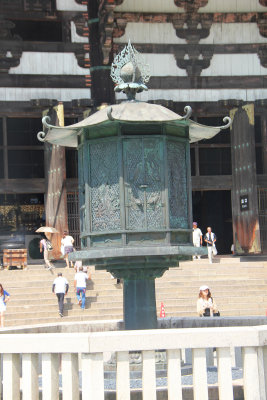
Close-up of a bronze lantern. |
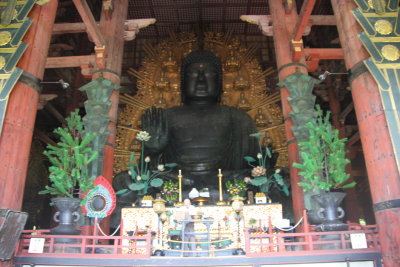
The Great Hall houses the world's largest bronze statue of the Buddha Vairocana, in Japanese known as Daibutsu, or Great Buddha. |

Close-up of the Daibutsu. |
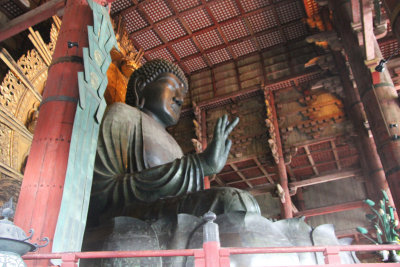
Side view of the Daibutsu. |
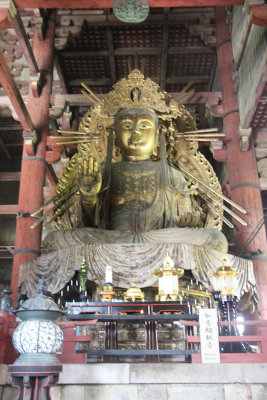
Another Buddhist statue inside the Great Hall of the Todaiji Temple. |
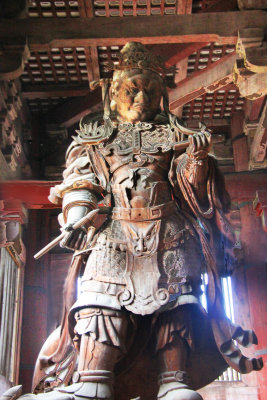
Guardian god demon that protects temple. |
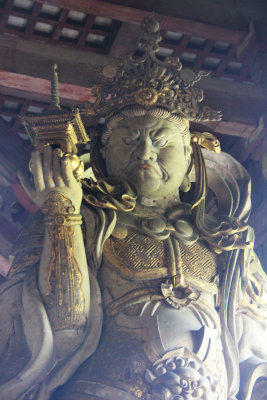
Close-up of another Guardian god demon. |
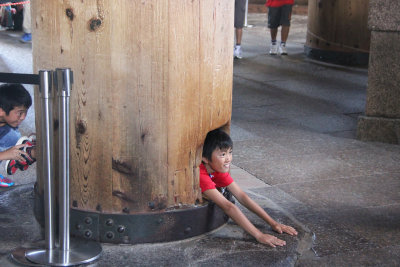
Children crawling through "Buddha's nostril." |
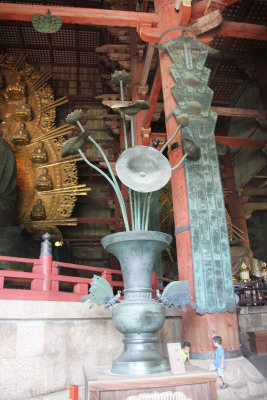
Unusual bronze flowers in a vase ornament in the temple. |
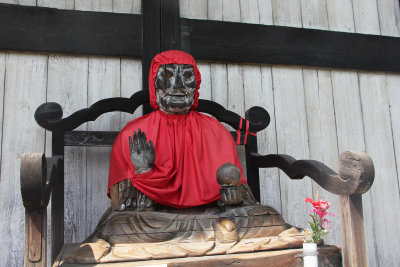
Statue of Pindola Bharadvaja ouside the temple (one of four Arhats asked by Buddha to stay in the world to spread Buddhist law). |
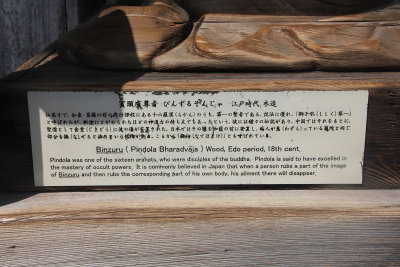
Sign describing the role of Pindola Bharadvaja in Buddhism. |
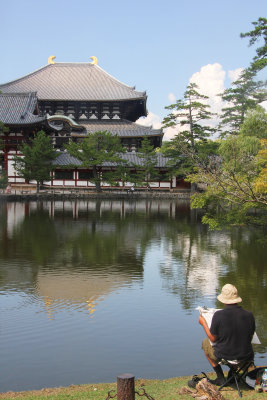
Bucolic lake in front of Nara's Todaiji Temple, with an artist sketching. |
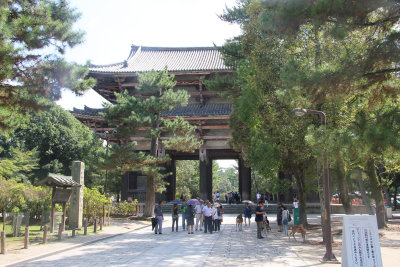
Along the approach to Todaiji stands the Nandaimon Gate, a large wooden gate. |
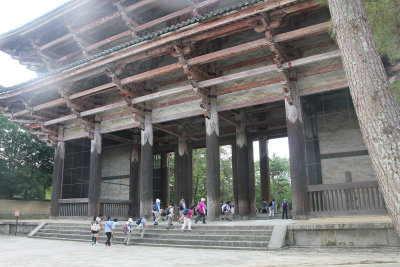
The existing Nandaimon (Great South Gate) is a reconstruction of end-12th century based on Song Dynasty style. |
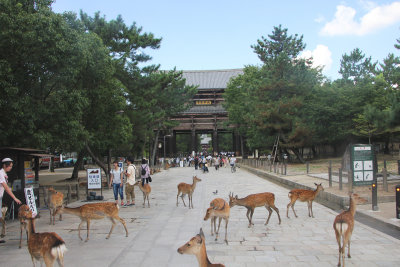
There are many deer in front of the gate, since it is next to Nara Park. |
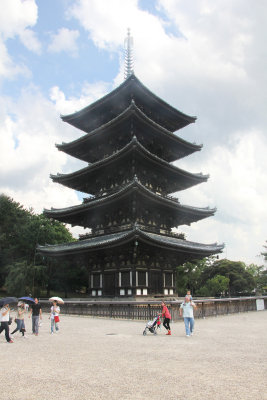
The Five Storied Pagoda, was once considered the symbol of Nara. |
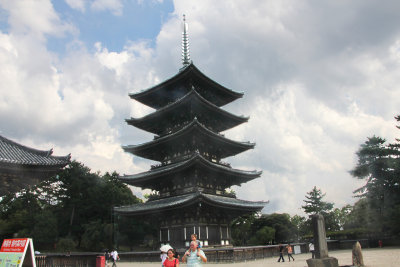
It is the second highest pogoda in Japan, and it is one of the great Metropolitan Monasteries during the Nara Period. |
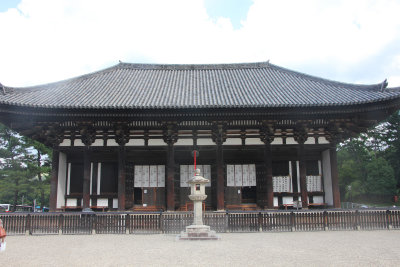
The Kohfukuji National Treasure House is a museum and also one of the oldest temples in Japan. |
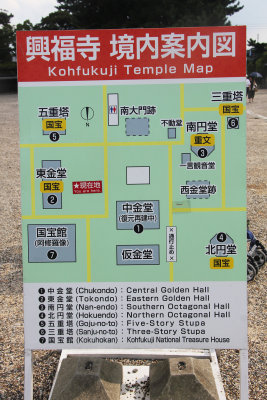
A Kohfukuji temple map. |
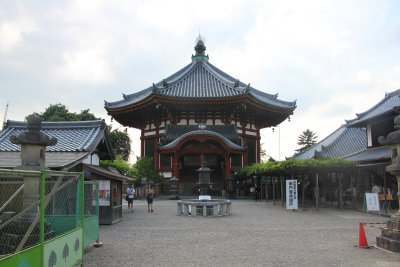
View of Nara's South Octagonal Hall, which is the ninth temple on the West Japan 33 Temple Pilgrimage Route. |
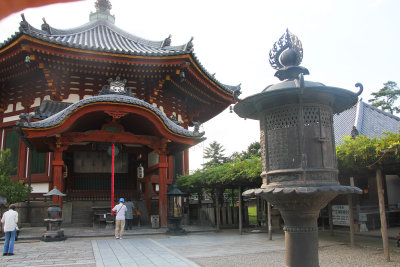
Close-up view of South Octagonal Hall. |

Dragon at Sarusawaike Pond, which is next to the Kohfukuji temple area. |
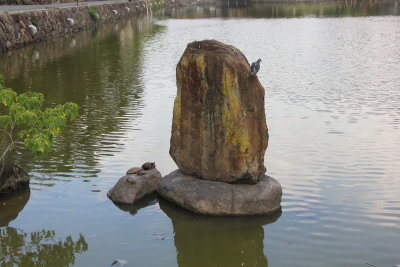
Serene setting with rocks at Sarusawaike Pond. |

Tortoises taking in the sun on a rock at Sarusawaike Pond. |

Waiting at the Nara train station for a bullet train to go back to Kyoto. |
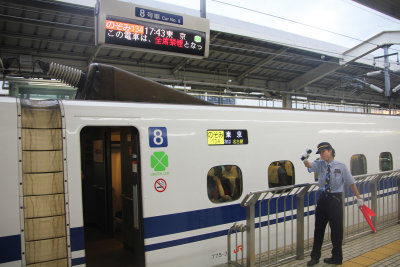
The trains were always right on time. |
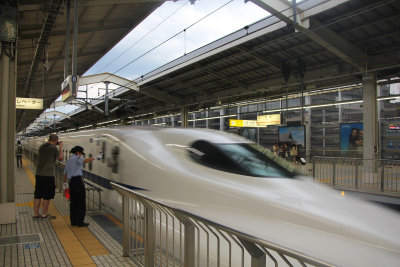
Bullet train coming into the station. |
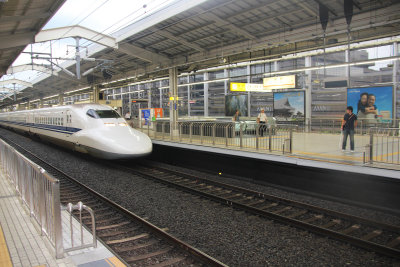
The trip from Nara to Kyoto takes about 35 minutes on Kintetsu Railways and 45 minutes on Japan Railways (JR). |











